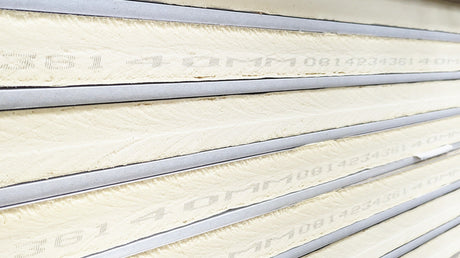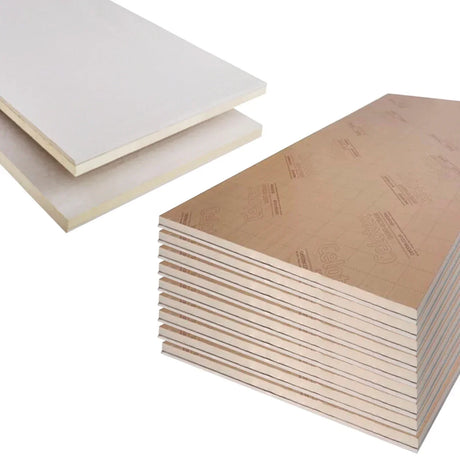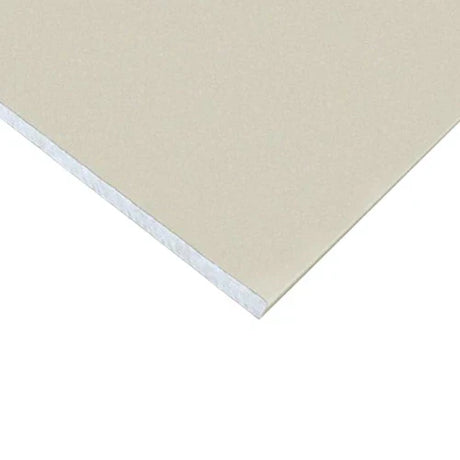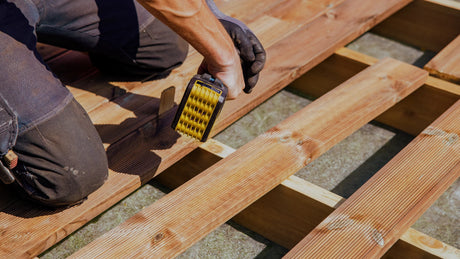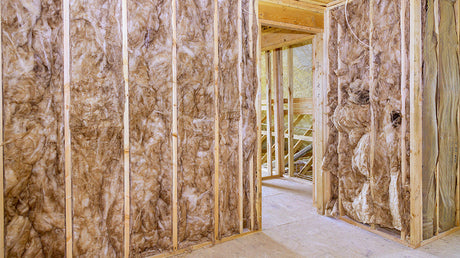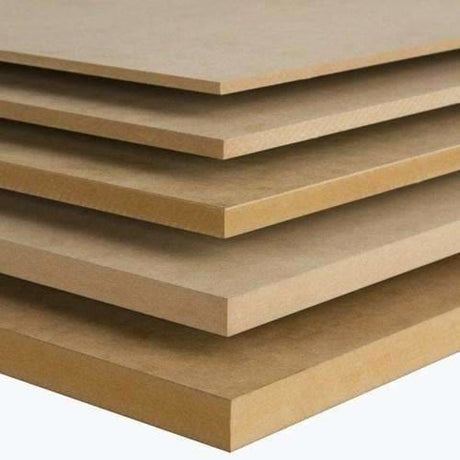When you're planning a DIY project that requires shelving in moisture-prone areas like bathrooms, kitchens, or utility rooms, the choice of materials can feel overwhelming. If you're like many of our customers at DIY Building Supplies, you want something that looks beautiful whilst standing up to the challenges of humidity, splashes, and daily wear. That's where marine plywood becomes a game-changer for your floating shelf projects.
Understanding Marine-Grade Plywood: What Makes It Special?
Before diving into your floating shelf project, it's worth understanding what sets this specialist material apart from standard plywood options. I'll admit, when I first started exploring building materials for moisture-resistant projects, I assumed all plywood was essentially the same. I couldn't have been more wrong.
Marine plywood is manufactured specifically to withstand prolonged exposure to moisture and humidity. Unlike standard plywood, which uses interior-grade adhesives that can delaminate when exposed to water, this premium material employs waterproof phenolic resin adhesives throughout its construction. This fundamental difference transforms it from a building material that merely tolerates occasional moisture into one that actively resists water penetration and structural degradation.
British manufacturers such as Robbins Timber and James Latham have developed specifications that meet BS 1088 standards, ensuring consistent quality and performance. These specifications require zero voids in the core construction, meaning there are no gaps between layers where moisture could accumulate and cause problems. The timber veneers used in quality marine plywood come from tropical hardwoods like okoume or meranti, selected specifically for their natural resistance to moisture and decay.
Why Choose This Premium Material for Your Floating Shelves?
The benefits of using marine plywood for floating shelves extend far beyond simple moisture resistance. When you're investing time and effort into a DIY project, you want materials that deliver reliable, long-term performance without constant maintenance or premature replacement.
The structural integrity of this specialist material remains remarkably stable even when humidity levels fluctuate. In a typical bathroom, for instance, humidity can swing from 30% during quiet periods to over 80% during and after hot showers. Standard plywood responds to these changes by expanding and contracting, eventually warping, twisting, or developing splits. The superior construction of moisture-resistant plywood minimises these movements, maintaining dimensional stability that keeps your shelves looking pristine year after year.
The aesthetic versatility of this material surprised me during my first projects. The smooth, consistent grain pattern provides an excellent foundation for various finishes. Whether you prefer the natural wood appearance enhanced with clear varnish, a contemporary painted finish, or even veneer application, it accepts finishes beautifully and maintains them effectively in challenging environments.
Edge stability represents another crucial advantage often overlooked until problems emerge with lesser materials. The void-free construction means cut edges remain solid and stable, accepting edge banding or finish applications without the unsightly gaps or crumbling that can occur with standard plywood edges in moist conditions.
Planning Your Floating Shelf Project
Success with any DIY project begins with thorough planning, and floating shelves are no exception. The preliminary decisions you make will influence both the immediate success of your installation and the long-term performance of your shelves.
Determining Appropriate Thickness
The thickness you select depends primarily on the span between supports and the anticipated loading. For floating shelves mounted to hidden brackets, 18mm material provides an excellent balance of strength and appearance for spans up to 600mm with moderate loading. If you're planning longer spans or anticipate heavier loads, such as storing books or displaying ceramic collections, 25mm thickness offers additional stiffness that prevents sagging over time.
I learned this lesson the hard way on an early project, where I used 12mm material for a 750mm span in a bathroom. Whilst initially acceptable, the shelf developed a subtle but noticeable sag after several months of holding toiletries. The lesson: always err on the side of slightly overbuilding rather than pushing material capabilities to their limits.
Considering Your Environment
Even within moisture-prone rooms, conditions vary significantly. A shelf in a powder room experiences far less sustained humidity than one in a family bathroom with a shower. Similarly, a kitchen backsplash shelf receives different exposure than one over a sink. These environmental factors should inform not just your material choice, but also your finish selection and maintenance planning.
For areas receiving direct water exposure, such as above bathroom sinks or next to showers, consider leaving slightly larger clearances between the shelf and walls to allow air circulation. This simple planning detail can significantly extend the life of your installation by preventing moisture accumulation in corners where water might collect.
Essential Materials and Tools
Gathering appropriate materials and tools before starting saves frustration and ensures professional results. Through numerous projects, I've learned that having everything prepared makes the difference between a smooth, satisfying build and a frustrating experience punctuated by multiple trips to the builders merchant.
Material Requirements
Beyond the plywood sheets themselves, you'll need quality adhesives, fixings, and finish materials. For bonding edge banding or trim pieces, marine-grade adhesives from manufacturers like Everbuild ensure joints remain intact despite moisture exposure. Stainless steel fixings prevent rust staining, a critical consideration in humid environments where standard steel fixings can leave unsightly marks within months.
The fixing system deserves particular attention. Hidden bracket systems from British suppliers like Screwfix or Toolstation provide clean, contemporary appearance whilst offering excellent load-bearing capacity. These systems typically comprise metal rods that insert into holes drilled in the shelf back, mounting to substantial wall plates secured to studs or masonry.
Tool Selection
Achieving professional results requires appropriate tools, though the list needn't be extensive. A quality circular saw or track saw enables accurate, straight cuts in the dense material. A router proves invaluable for creating clean, rounded edges that accept finish beautifully whilst eliminating sharp corners that could chip or splinter. Sandpaper in progressively finer grits, starting at 120 and finishing with 240 or 320, prepares surfaces for finishing.
Step-by-Step Construction Process
With materials gathered and plans finalised, the construction process becomes straightforward when approached methodically. Taking time to execute each step carefully prevents problems that become difficult or impossible to rectify later.
Cutting and Edge Preparation
Begin by measuring and marking your cuts carefully, remembering the carpenter's maxim: measure twice, cut once. This material cuts cleanly with sharp blades, but its density means using a blade designed for plywood rather than general-purpose cutting. Support the sheets properly during cutting to prevent tear-out on the underside, using masking tape along cut lines if necessary to further minimise splintering.
Edge preparation deserves particular attention, as shelf edges receive close visual scrutiny and frequent handling. After cutting, lightly sand edges to remove any roughness, then round them slightly with sandpaper or a router equipped with a roundover bit. This small detail dramatically improves both appearance and feel, transforming edges from raw and industrial to refined and intentional.
Finishing for Moisture Protection
Whilst this specialist plywood resists moisture inherently, appropriate finishing enhances protection and appearance. The finishing process requires patience, with multiple thin coats always superior to single thick applications. For natural wood appearance, yacht varnish from brands like International or Ronseal provides excellent moisture protection with UV resistance that prevents yellowing. Apply at least three coats, sanding lightly between each with 320-grit paper to ensure adhesion and smoothness.
For painted finishes, quality primer designed for plywood creates an ideal foundation. Dulux Trade or Crown Paints offer excellent options that seal the wood whilst providing a surface that accepts topcoats beautifully. Two primer coats followed by two finish coats ensure comprehensive coverage and durability, with light sanding between each coat.
Installation Best Practices
Installation represents the final step where careful planning and quality materials come together to create functional, attractive shelving. Attention to detail during installation ensures your shelves perform as intended for years to come.
Locating Studs and Securing Brackets
Floating shelves rely entirely on their wall attachment for support, making proper fixing location critical. In masonry walls common in British construction, use quality wall plugs sized appropriately for your fixing bolts. In stud walls, locate studs accurately using a detector, as fixing into studs rather than just plasterboard makes the difference between shelves that hold substantial weight and those that fail catastrophically.
Mark bracket positions carefully, using a spirit level to ensure horizontal alignment. Nothing undermines a DIY project's appearance quite like shelves that visibly slope. Take extra time at this stage, checking measurements from multiple reference points before drilling.
Final Assembly and Adjustment
When fixing shelves to brackets, don't overtighten fixings immediately. Start all fixings loosely, check alignment once more, then gradually tighten whilst monitoring that the shelf doesn't shift. This approach allows minor adjustments and prevents the stress concentrations that can occur when fixings are aggressively tightened in sequence.
Maintenance for Longevity
Even quality materials benefit from appropriate maintenance. Fortunately, properly finished moisture-resistant shelves require minimal attention. Regular dusting prevents dirt accumulation, whilst prompt cleaning of spills protects finishes. Every few years, inspect finishes for wear, particularly along edges and in areas receiving frequent contact. Light sanding followed by fresh finish coat maintains protection and refreshes appearance.
Why DIY Building Supplies Supports Your Success
At DIY Building Supplies, we've built our reputation by providing not just quality materials like marine plywood from trusted British manufacturers, but also the expert guidance that helps ensure project success. Our team understands that successful DIY projects require more than materials; they require knowledge, support, and occasionally problem-solving assistance from people who genuinely care about your outcome.
We stock moisture-resistant plywood in various thicknesses and grades, along with all the complementary materials your floating shelf project requires. More importantly, our team brings practical experience to every customer conversation, offering advice grounded in real-world application rather than theoretical knowledge.
Your floating shelf project deserves materials that perform reliably in challenging conditions. Marine plywood delivers that performance whilst offering the aesthetic versatility and workability that makes DIY projects satisfying. Whether you're creating bathroom storage, kitchen display shelving, or utility room organisation, choosing appropriate materials from the start ensures results you'll appreciate for years to come.
Ready to start your floating shelf project? Contact our team at DIY Building Supplies to discuss your specific requirements. We're here to ensure you have exactly what you need for success, from the specialist plywood itself to every fixing, adhesive, and finishing material required for professional results.


